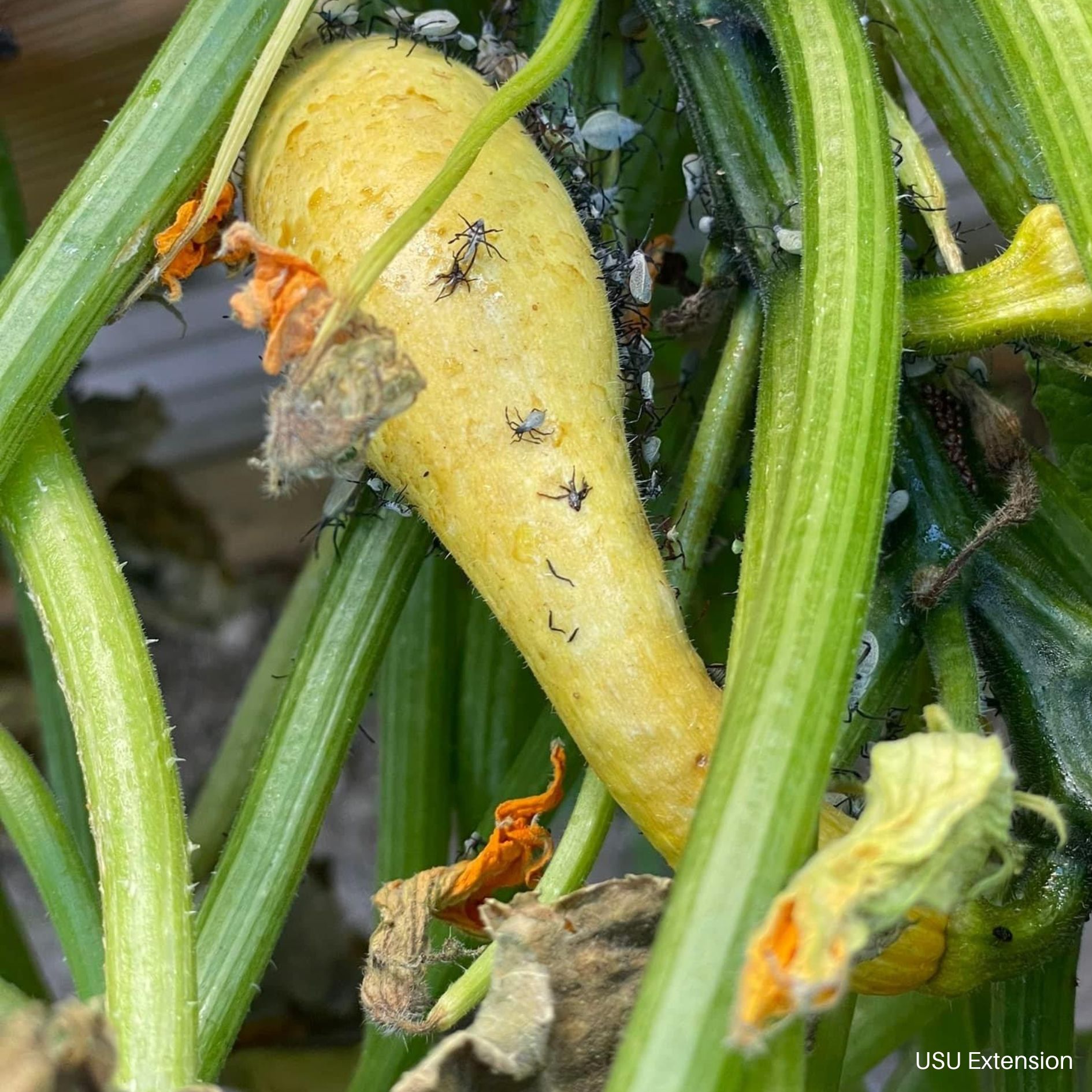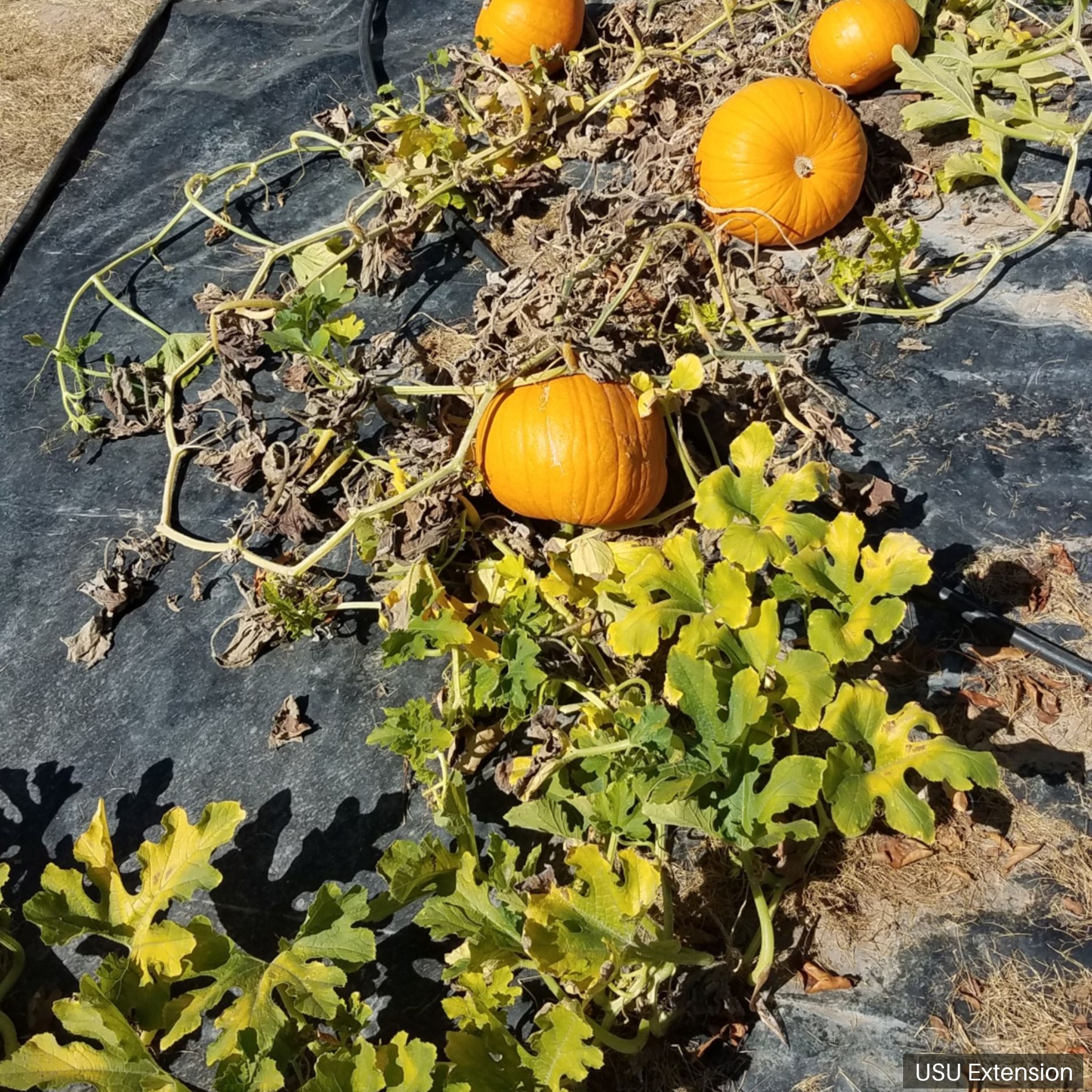Squash Bug
HOSTS
- Cucumber
- Melons
- Winter Squash
- Summer Squash
OVERVIEW
Squash bugs are the primary pest of cucurbit crops, and can kill plants. They feed with a piercing-sucking mouthpart, removing large amounts of plant sap. In Utah, they do not vector plant diseases.
DESCRIPTION
Adults are 5/8-inch long with wings folded over a flat back. They emit a foul odor when disturbed and some people call them “stink bugs”; however, true stink bugs are in a different insect family. There are five nymph squash bug stages (immatures), that range in color from reddish to green-gray. Eggs are shiny bronze and are found on the underside of leaves.
BIOLOGY
Egg | Nymph | Adult
Squash bugs spend the winter as adults in protected sites under plant debris, compost piles, around building foundations, etc. They emerge in spring, typically during April in southern Utah and during May in northern Utah. They fly to host plants to feed, mate, and lay eggs. Each female lays up to 250 clusters of 4-40 eggs on the undersides of leaves. The eggs hatch into nymphs that take 4 to 6 weeks to mature to adults. The summer generation of adults appears in late July in northern Utah (3 to 4 weeks earlier in southern Utah), and feed on cucurbit hosts while they build up fat reserves to survive the winter.
SYMPTOMS
- Scars and desiccated, sunken areas on fruits
- Wilting foliage during the day (due to lack of plant sap) and recovery at night
- Complete plant decline
SCOUTING
One of the most important strategies is reducing the squash bug population through careful monitoring and removal of eggs.- In the spring, look for adult squash bugs in plant debris and perennial plants.
- Monitor for eggs regularly on the underside of leaves.
GENERAL MANAGEMENT
- Remove or kill eggs using duct tape to remove eggs, smearing eggs with oil, or cutting out the section of the leaf with eggs.
- Physically remove adults and nymphs by hand and drown them in soapy water.
- Pull out plants right after harvest to remove overwintering sites for adults.
- Rotate with non-cucurbit crops to minimize the population of overwintering adults.
- Plant cucurbit varieties with resistance to squash bugs, such as butternut and royal acorn squash.
INSECTICIDES
Adult squash bugs are tolerant of insecticides, so if you choose to spray, begin shortly after egg hatch to target nymphs instead. To be effective, insecticide sprays must penetrate the plant canopy and thoroughly cover the top and underside of leaves, fruits, and vines. Don’t spray during the day when plants are blossoming, to avoid harming pollinators.
• Insecticides for commercial production.
• Insecticides for home gardening.





